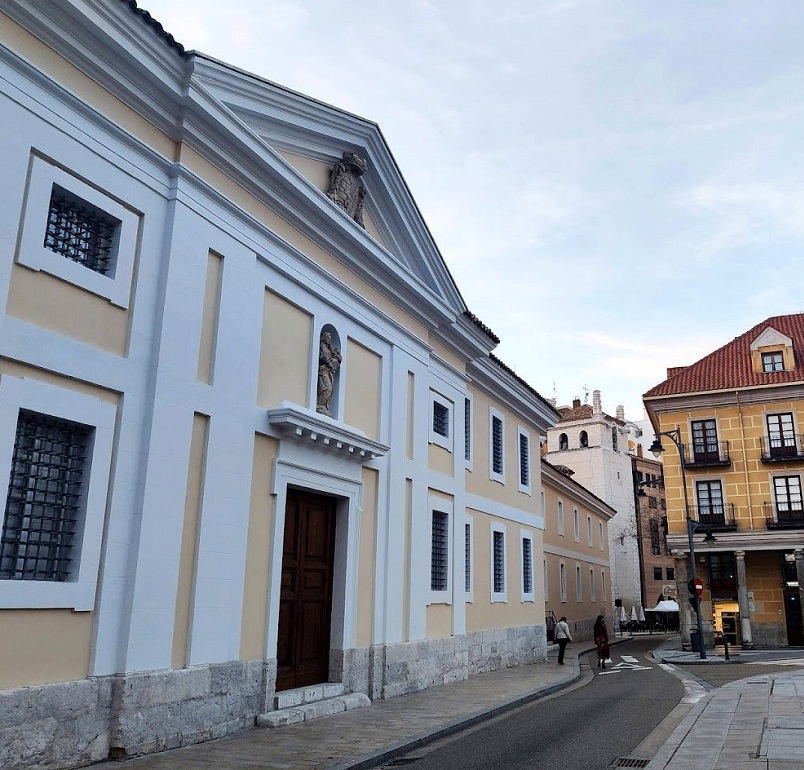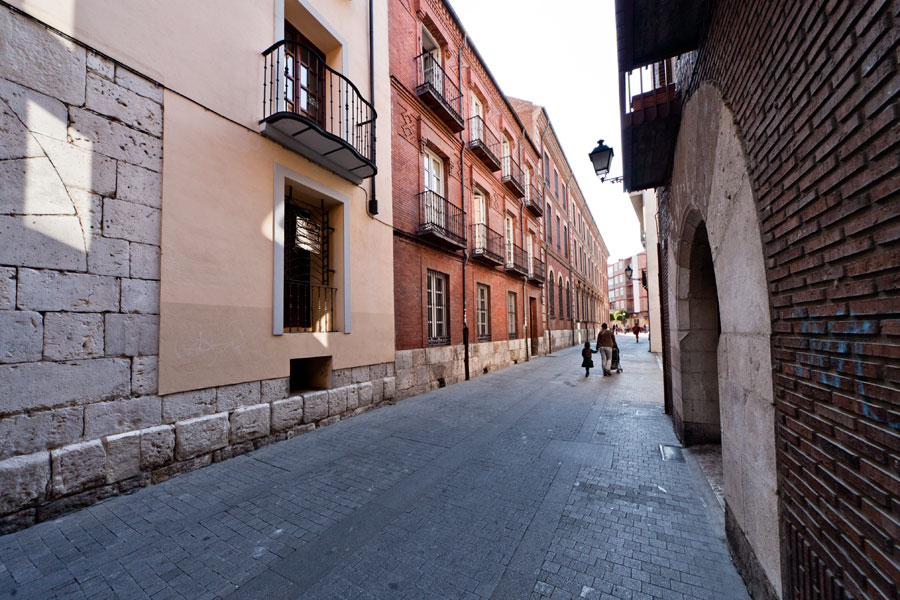Lugares - monumentos - Monasterio de San Joaquín y Santa Ana - Lugares - monumentos - Monasterio de San Joaquín y Santa Ana Lugares - monumentos - calle Juan Mambrilla
Breadcrumb
Breadcrumbs
Asset Publisher
Royal Monastery of Saint Joaquim and Saint Anne

Visit its museum: it has the only three Goyas that can be visited in the region
The foundation of the old convent of Bernarda's Nuns, dates back to the end of the 16th century, at the initiative of Francisco de Praves. In 1780 the building was rebuilt under the plans of Francisco Sabatini, finishing in 1787. It is an elliptical temple covered by a cupola. This monastery is the finest and most important singular representation, pure and intimate, of neoclassical architecture that can be found in Valladolid.
Inside the church, we find notable reredoses with paintings by Francisco de Goya and Ramón Bayeu. In 1978 it was established as a Museum, where one may admire 16th century paintings and some of the most interesting sculptural religious works in polychromatic wood, giving specific mention to the Cristo Yacente (Lying Christ) of Gregorio Fernández or the Sorrowful Mother (Dolorosa) of Pedro de Mena. Finally, there is an important collection of religious vestments from the 16th to the 18th centuries, together with other interesting artefacts of convent life.
Navigation Menu
Asset Publisher
Plaza Santa Ana, 4.
Asset Publisher
LOCATION
Widget tiempo Valladolid
Media Gallery
Valladolid seen through the eyes of its inhabitants and tourists
SanJoaquin1.jpg
SanJoaquin1.jpgSanJoaquin2.jpg
SanJoaquin2.jpgSanJoaquin3.jpg
SanJoaquin3.jpgSanJoaquin4.jpg
SanJoaquin4.jpgSanJoaquin5.jpg
SanJoaquin5.jpgSanJoaquin1.jpg
SanJoaquin1.jpgSanJoaquin2.jpg
SanJoaquin2.jpgSanJoaquin3.jpg
SanJoaquin3.jpgSanJoaquin4.jpg
SanJoaquin4.jpgSanJoaquin5.jpg
SanJoaquin5.jpgAsset Publisher
Juan Mambrilla street

On this street, among other singular buildings, are the Zúñiga Palace and the Mudarra Palace
On this street, among other singular buildings, the Zúñiga Palace stands out, located on the number 14. It is a construction of the 15th century, with a geometrical facade and the entrance with a semicircular arch, an alfiz and a coat of arms at both sides. It has an interesting courtyard with a coffered ceiling supported by octagonal pillars and wooden bases. It was the property of Alonso de Zúñiga, and Alvaro the Luna spent a night here before been brought to the Portillo Castle for his execution. The tribunal of the Inquisition was installed here. Today, it belongs to the University of Valladolid and is called Centro Buendía, which houses the Secretariat of Publications.
Another singular building on this street is the Mudarra Palace, on the number 33. It is a construction of the 16th century and currently is the Convent of Salesas. It has an interesting courtyard and its facade conserves the coat of arms of the family that ordered its construction. It is a clear example of the purest Renaissance of Valladolid.
Otro edificio singular de esta calle es el Palacio de los Mudarra, ubicado en el nº 33. Esta construcción es obra del siglo XVI, aunque actualmente ha abandonado sus funciones palaciegas y es el Convento de Salesas. Posee de su pasado civil, un interesante patio y mantiene la fachada de piedra, aún con el blasón de la familia que lo mandó construir, siendo una clara muestra del Renacimiento purista vallisoletano.